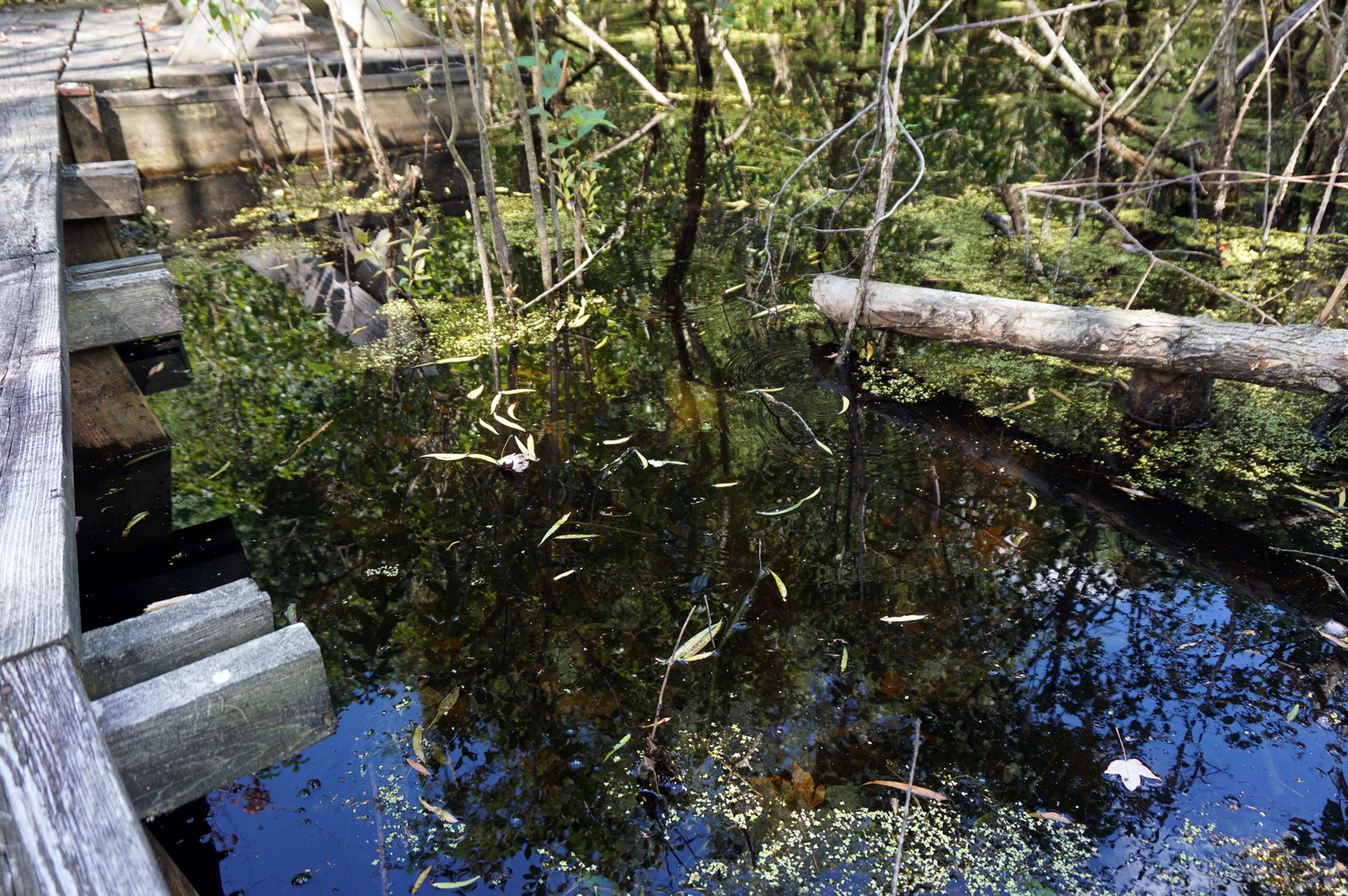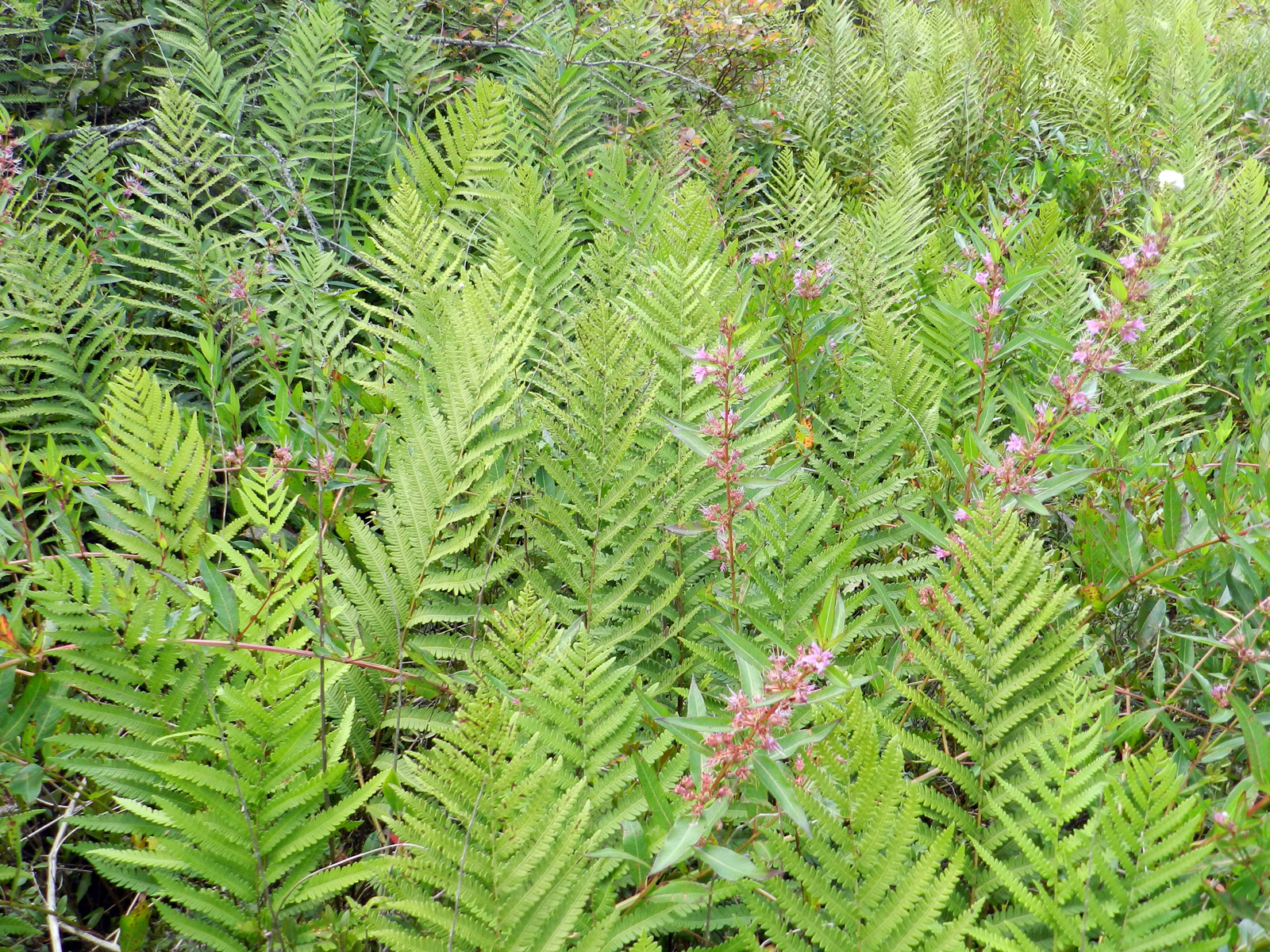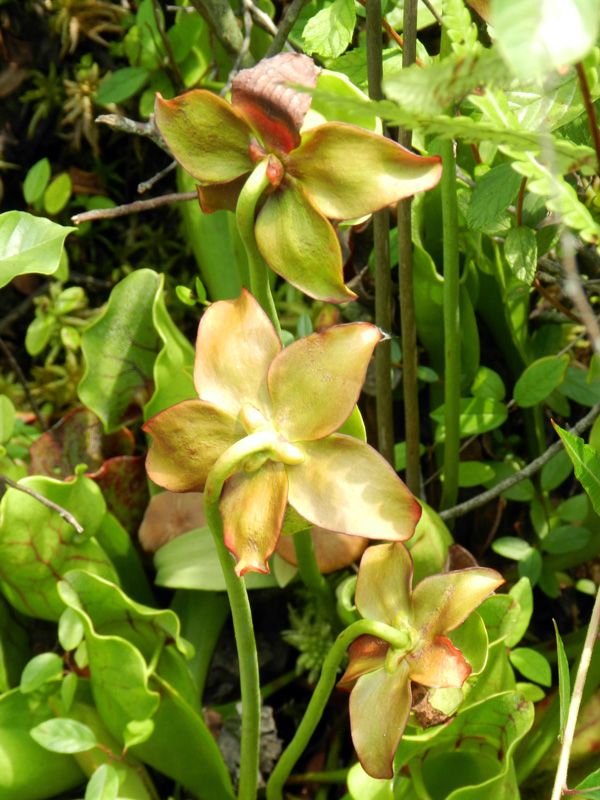
Mr C and I went to the bog, where we haven’t been for several years. It is one of my favorite places. It is profoundly tranquil and mysterious.
The habitat of the bog is special because the water is trapped in an invisible clay bowl where it has been collecting for numberless years. A limited number of plants and bugs can endure the bog’s acidic, oxygen-starved water and austere conditions. Plus, the roots of the plants must like being wet or underwater.
The pace of change is very slow, except that the seasons sweep life along there in the usual way. In the deeper parts of the bog, the inky water reflects the sky, its surface spangled with stray leaves and algae.
 The plants suited to the bog–the spaghnum moss, twisty ferns, tamaracks, cattails, chokeberry bushes, and wild cranberry–tend to be low-growing, but they grow in great profusion. Repetition of a small palette of plants swarming with bees (but free of mosquitoes) makes the bog the intense place that it is.
The plants suited to the bog–the spaghnum moss, twisty ferns, tamaracks, cattails, chokeberry bushes, and wild cranberry–tend to be low-growing, but they grow in great profusion. Repetition of a small palette of plants swarming with bees (but free of mosquitoes) makes the bog the intense place that it is.

Below the level of the boardwalk, the pitcher plants grow out of the moss in clumps. These plants eat insects that fall into their tubular “pitchers” or throats, which are lined with needles that make it impossible for the bugs (or even salamanders!) to climb out. The throats or pitchers are filled with enzymes in which the insects dissolve. The proteins from the bugs make up for the dearth of nutrients around.
In late summer, the pitcher plants flower. The opposite of delicate, their petals are stiff and leathery. According to Scientific American, the various species of pitcher plants around the world are remarkable in that, over time, despite their geographic alienation, they have all evolved to produce similarly lethal enzymes. This fact so fascinated Charles Darwin that he wrote an entire volume on Insectivorous Plants (1865).

Lisa Radomsky says
Fabulous pictures!
Regarding your last post about the white insect, it had likely just molted. In a couple hours the white or ghost color goes away as the insect grow its new exoskeleton. Don’t know what it was, though!
Celia says
Lisa, so interesting. I didn’t know that about the “ghost” bug. It looked so different than the cicadas we’ve seen. I like to think of it taking on some new colors along with the new exoskeleton. It was a strong insect.
Love,
Celia
Harley says
Not long ago I read an article from some science journal: the author wrote about a body, found intact, in a similar type of bog in Ireland. The owner was doing some excavating and was startled to dig up “a fresh looking corpse.” He called the cops, who were startled as well. Then the cops called their forensic specialist. He or she determined that the corpse was about 2,000 years old -or even more ! The flesh had been that well preserved in the bog by the spaghnum moss and acidic soil, whereas its bones were almost all gone. I wonder if the bog you went to would have some type of preserved animals in it or perhaps ( UGH ! ) an old body from some ancient dwellers of that area.